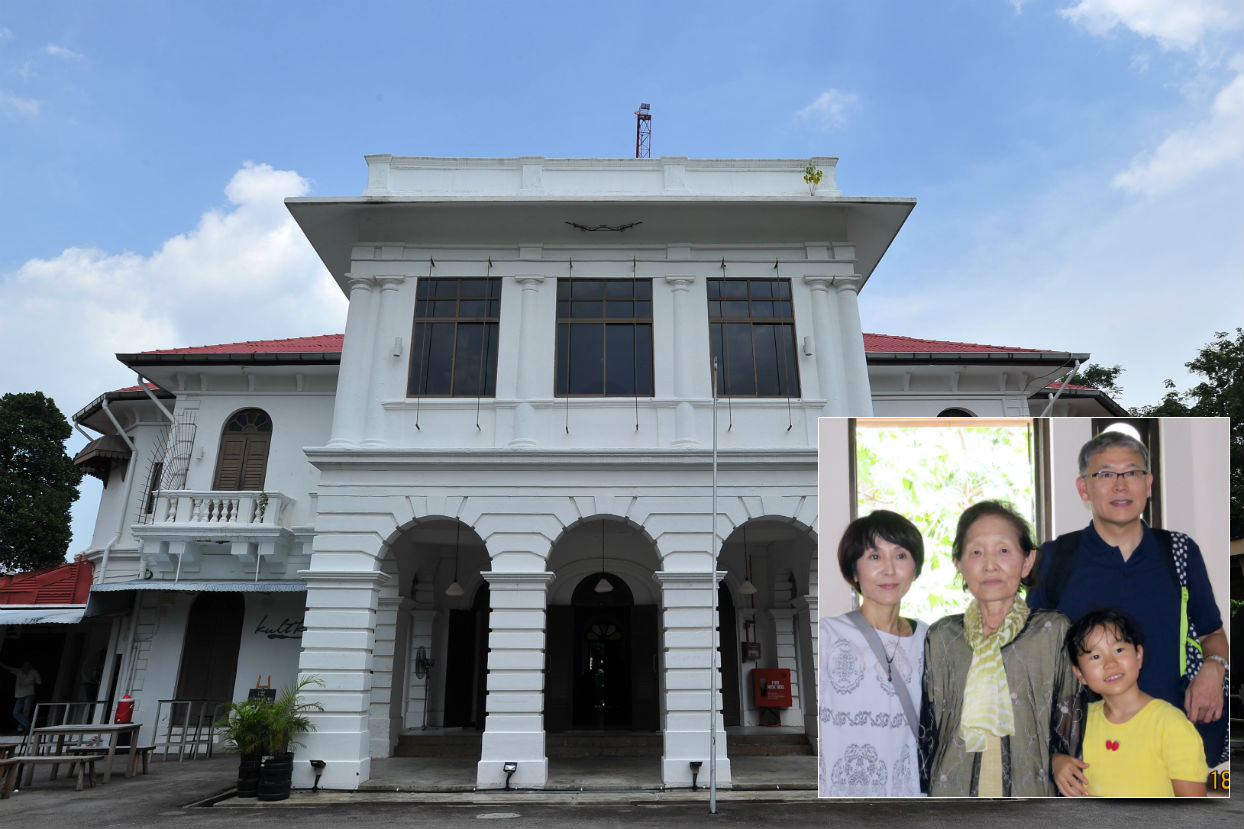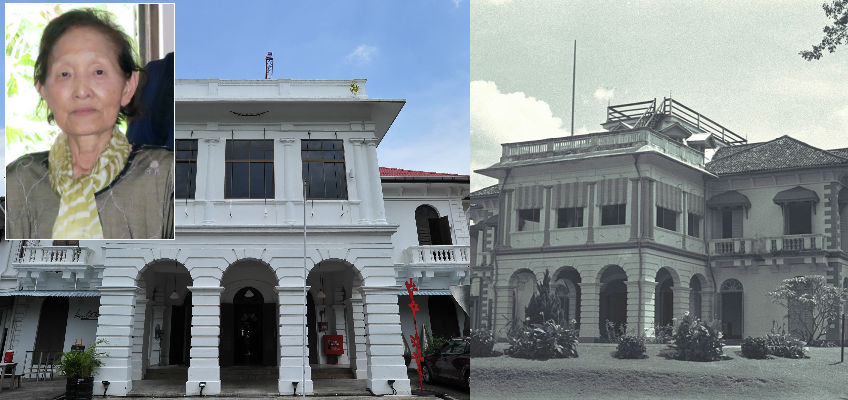The mystery behind the origins of a century-old colonial villa on top of Mount Emily has been solved.
Known for decades as Osborne House and now a home to arts groups, its early history had stumped most experts.
It has been suggested by some, such as heritage blogger Jerome Lim, that the two-storey structure at 11, Upper Wilkie Road, had been developed in the late 19th century by Syed Hashim Kassim, the Sultan of Siak, a place in Indonesia.
What is known, however, is that it was eventually bought by Singapore-based Japanese dentist Jukichi Ikeda.
Little else was known about him and how he had become its owner – until last year.
His descendant, 83-year-old Miyoko Yoshida, returned to Singapore last September to revisit her childhood home and shed more light on her granduncle and how the family came to own the house.
Her experience was documented in Chinese language daily Lianhe Zaobao earlier this month.
Mr Ikeda came to Singapore in the early 1920s and had a clinic in Hill Street. Ms Yoshida’s father was a young dentist who worked at the clinic. Mr Ikeda, who was fond of the young man, introduced him to his niece.
The two married and lived with Mr Ikeda and his wife. By 1935, the younger couple had three children. Ms Yoshida is their second child.
To cater to the growing family, Mr Ikeda forked out $22,000 on the 86,439 sq ft Mount Emily property in 1935. Ms Yoshida was four years old when she moved in and had a room on the second storey.
She told The Straits Times that it was an “exciting life”.
“There were maids and cooks who were very friendly to me. I spoke Malay with them. I also remember perspiring while I ate hot curry that a cook had prepared for me. There was a banana tree in the garden and a view of the cityscape and seascape which I still remember today.”
At the foot of the hill, pre-World War II Middle Road was home to a Japanese enclave known as Little Japan.
Architectural historian Lai Chee Kien found that the community had set up its own school, clubhouse, cemetery and even its own newspaper – the Nanyo Shimpo.
By 1939, the family had moved out of the bungalow to make way for the Japanese consulate-general. The family moved to a shophouse down the hill, where Ms Yoshida remembers the bells of the Convent of the Holy Infant Jesus ringing daily.
On the location of the consulate-general, Dr Lai said it was chosen as it was near the colonial British Government House and “paralleled” Japan’s colonial ambition.
The Japanese community was repatriated after the war and Ms Yoshida did not return to her childhood home for more than 70 years.
She said although Singapore has changed drastically, most of the original features of the bungalow have stayed the same.
“I was very glad to visit the bungalow because Singapore is the place I was born and where I grew up and have always thought of as my hometown,” she said.
After the war, the building changed hands several times. It was first used by the then Ministry of Social Affairs’ Social Welfare Department. The Mount Emily Girls’ Home took over the space in 1969, followed by the Wilkie Road Children’s Home in the 1980s. It was used as a counselling centre for drug addicts before the Nanyang Academy of Fine Arts moved in.
Non-profit arts organisation Emily Hill Enterprise is currently leasing the space from the Singapore Land Authority.
Blogger Mr Lim said the structure should be conserved: “It was significant to the pre-war Japanese community, which established themselves at Middle Road. It is also the oldest structure on Mount Emily.”
melodyz@sph.com.sg
Additional reporting by Walter Sim

This article was first published on March 21, 2016.
Get a copy of The Straits Times or go to straitstimes.com for more stories.






















